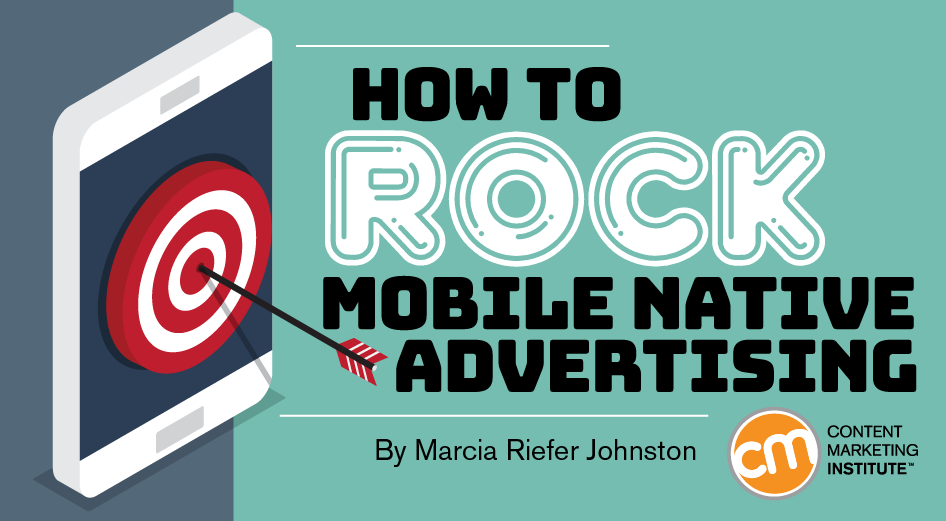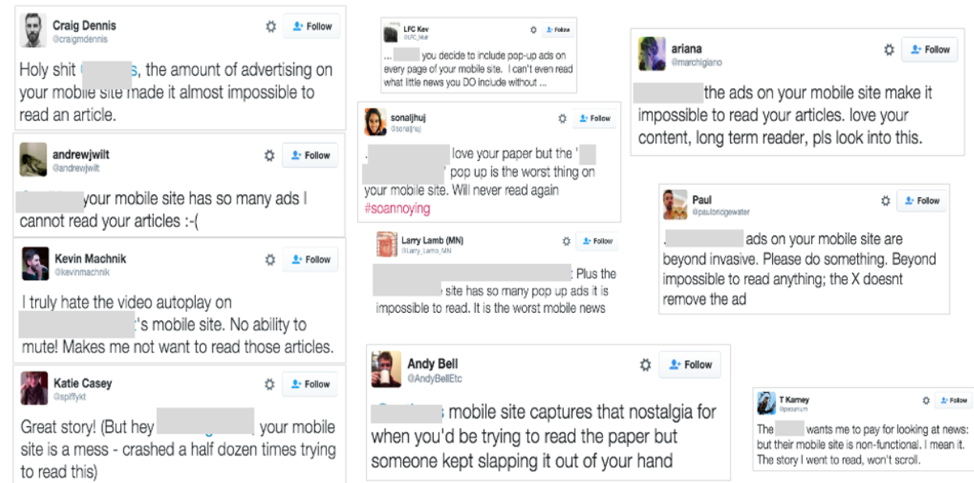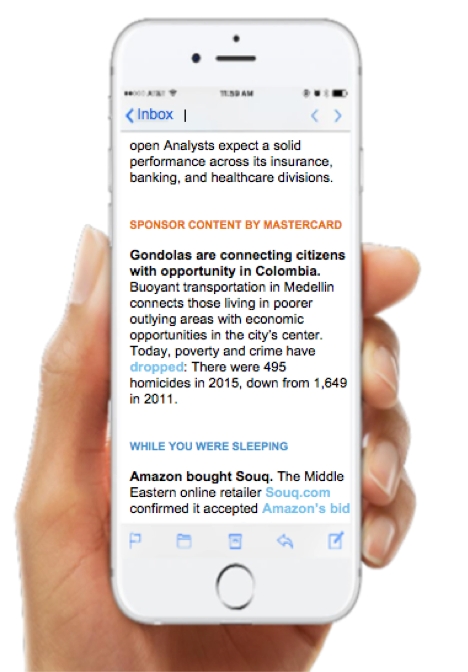Author: Marcia Riefer Johnston / Source: Content Marketing Institute

When Melanie Deziel’s New York Times colleagues tweeted “impressively produced” and “can’t believe I’m sharing a paid post … even mobile-friendly” about a native ad that she and her team had created, she knew T Brand Studio had gotten some things right.
What things, exactly? She shared her answers at Content Marketing World, How Innovative Brands Are Getting More out of Their Mobile Native Advertising Campaigns. Read on for highlights from Melanie’s talk.
What we talk about when we talk about native advertising
I confess, as a word nerd, I fell in love with Melanie when she declared marketers have forgotten that “native” is an adjective and it describes advertising.
Native advertising goes by many names, including sponsored content, promoted content, paid posts, and branded content. (Some marketers avoid – even loathe – the term “branded content” because it “gives agencies permission to keep talking about themselves, adding a bit of storytelling to product pitches.”)
To get clear about what she’s talking about when she talks about native advertising, let’s look at each word.
- “Native” means indigenous, belonging to an environment. “A plant is native to a certain climate,” Melanie says. “A person is native to a place. When we say that content is native or advertising is native, it means that it fits in the environment where it is served or received.”
- “Advertising” means paid. One company paying another to publish the content.
As CMI founder Joe Pulizzi sums it up, “If you pay for placement of … content in a format similar to the third-party site, it’s native advertising.”
While native advertising and content marketing are sometimes handled by separate teams with separate strategies, consider developing a strategy that covers both. Native advertising can help you achieve the same goals for your other content such as increasing brand awareness, driving people to your website, and building your subscriber base. You may discover new opportunities when you think of native advertising as simply another set of distribution channels for your valuable, relevant content – channels you happen to pay for.
Why Melanie talks about native advertising and mobile devices
You couldn’t find a person better equipped to talk about native advertising than Melanie, the founder of an industry newsletter on the topic, The Overlap League. Her journalism background has prepared her to create riveting, deeply researched stories, such as the 2014 piece that had her New York Times colleagues raving on Twitter. Her native advertising rivals the quality of the best editorial content in the world.
The piece, which explored the reality of life for women inmates, was part of The New York Times series sponsored by Netflix, the distributor of Orange Is The New Black. It was published before Season 2 was released. For a time, Melanie says, her article “appeared in the most-emailed module on the home page of The New York Times.”
Uh huh. A piece of sponsored content won over more readers than anything else in this prestigious purveyor of “all the news that’s fit to print.”

While native advertising isn’t a strictly mobile phenomenon, Melanie urges marketers to focus on the mobile experience of native ads. It’s easy to get the mobile experience wrong and important to get it right.
Don’t disrupt – go with the content flow
First things first: Ads (native or not) must stop hijacking our small screens. Melanie describes an experience we’ve all had: You’re reading on a smartphone when an ad takes over, and you can’t close it. Sometimes you get the ad to go away only to discover that your article has disappeared with it. Or closing it merely reveals another ad.
If we want people to welcome native advertising, Melanie says, we must present it in the flow of the content people came for.
Fellow presenter Jay Lauf made the same point in his Content Marketing World talk, Deconstructing Quartz (QZ.com): How One of the Most Popular Mobile Destinations Grows Audience, Extends Reach in Digital, and Creates a Superior Content Experience. Jay gives this sampling of tweets in which people let loose about intrusive ads on mobile websites:

Jay’s favorite is the bottom middle tweet: This “mobile site captures that nostalgia for when you’d be trying to read the paper but someone kept slapping it out of your hand.”
Instead of irritating our audiences, why not create native ads they’re likely to welcome, like this one (in the middle of the screen):

In this example, Jay, co-president and publisher of Quartz (“a new kind of global business news outlet”), shows its daily newsletter, which…
Audience Team
The digital audience insights you need to build, manage and market to your digital audiences.

